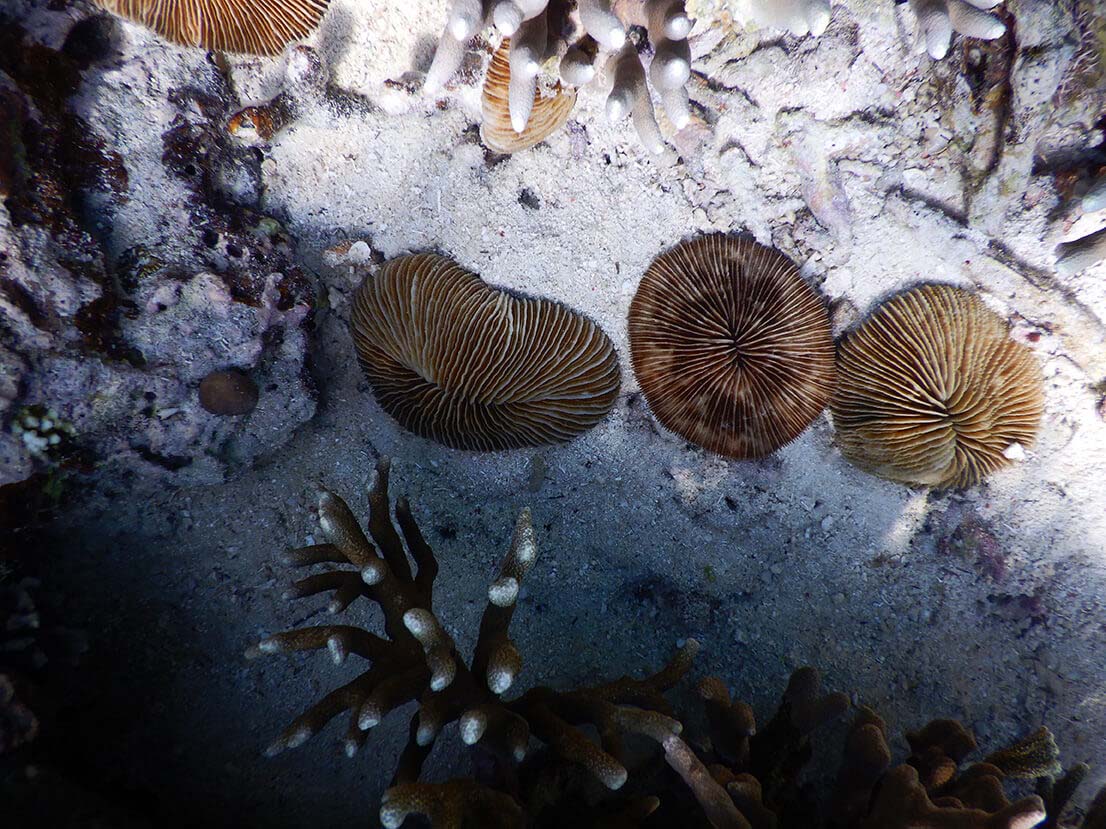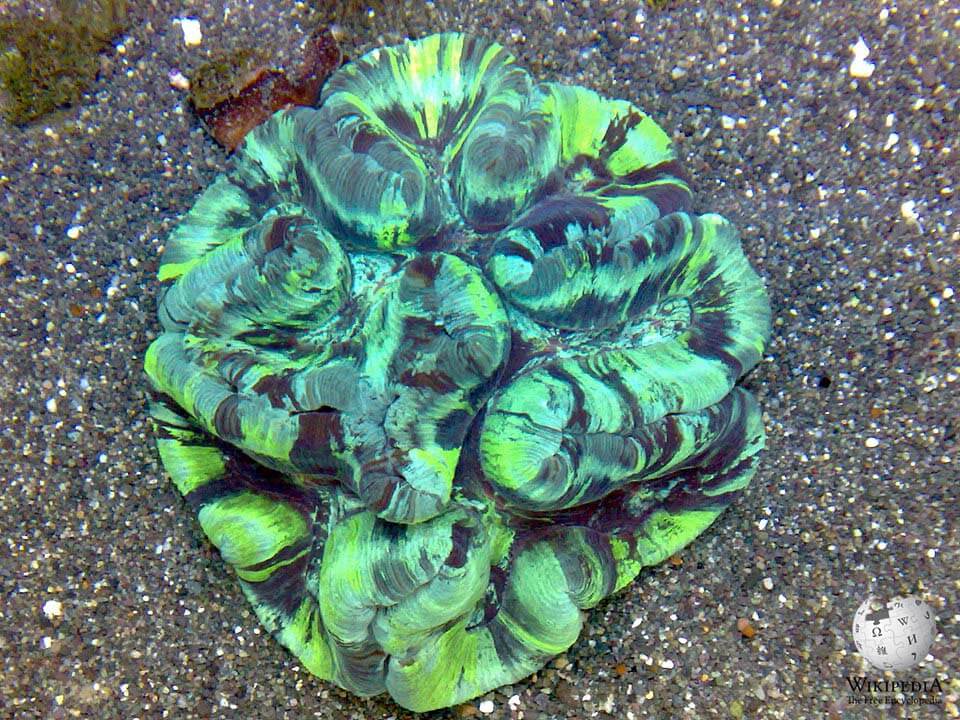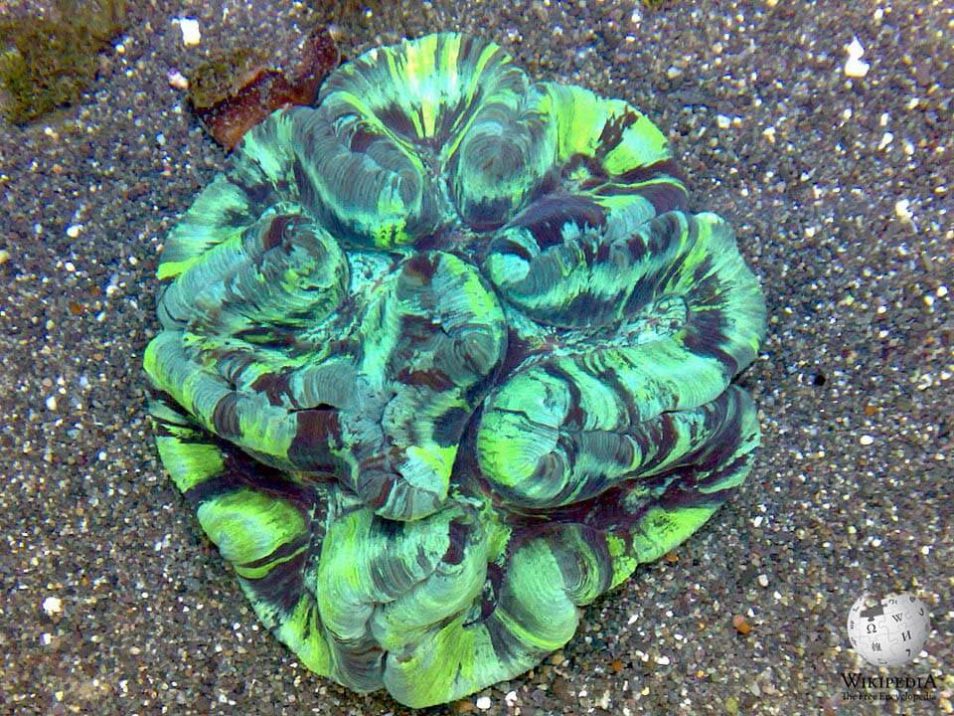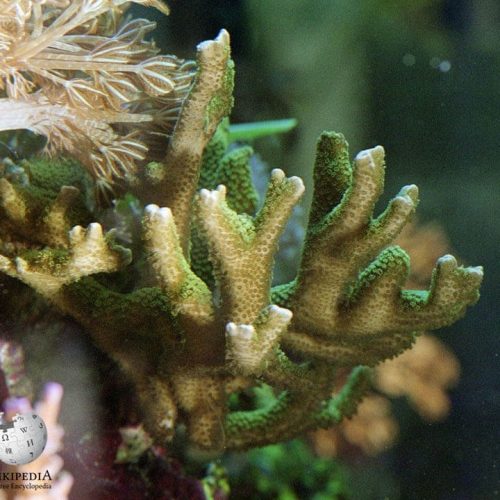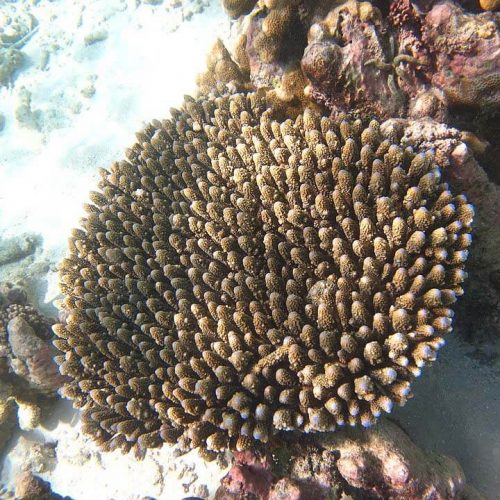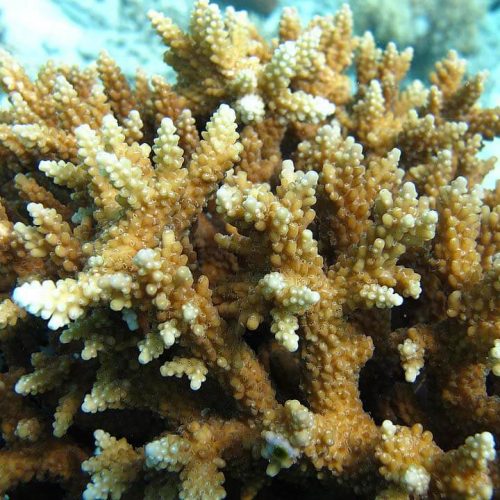Contents
The open brain coral (Trachyphyllia geoffroyi) is a brightly colored free-living coral species in the family Merulinidae. It is the only species in the monotypic genus Trachyphyllia and can be found throughout the Indo-Pacific.
Description
Open brain corals can be solitary or colonial.[3] They are small corals, rarely reaching over 20 cm in diameter.[1] They are free-living and exhibit a flabello-meandroid growth form, meaning they have distinct valley regions separated by walls.[4][5] In colonial forms, the valley regions can contain multiple individual polyps.[5] Complexity of valley regions can range; some are hourglass shaped while other cans be highly lobed.[3] They typically have bilateral symmetry.[4] During the day when the polyp is closed, the coral is covered by a mantle that extends beyond the skeleton, but can retract when disturbed.[4][5] Polyps and mantle are very fleshy.[4] Colonies can be blue, green, yellow, brown, and are often vibrantly colored.[4][5]
The open brain coral is known to host a species of gall crab, Lithoscaptus semperi.[6]
Distribution and habitat

Open brain corals can be found throughout the Indo-Pacific, from the Red Sea to New Caledonia. They are found up to a maximum depth of 40 meters.[1]
Open brain corals are less common directly in coral reef communities, and are more often found on sandy reef slopes, around continental islands, and lagoons.[3][5][1] Open brain corals can often be found near other free-living corals.[1][7] Large colonies of open brain corals are uncommon, and are typically only observed in marine protected areas.[1]
Threats
The IUCN lists open brain corals as "near threatened" due to habitat loss and over-harvesting for the aquarium trade.[1] The biggest exporter of open brain coral is Indonesia. In 2005, Indonesia exported over 60,000 open brain corals for use in the aquarium trade.[1]
Other threats to open brain corals include disease, acidification, and severe storms.[1]
References
- ^ a b c d e f g h i Sheppard, C.; Turak, E.; Wood, E. (2008). "Trachyphyllia geoffroyi". IUCN Red List of Threatened Species. 2008: e.T133260A3659374. doi:10.2305/IUCN.UK.2008.RLTS.T133260A3659374.en. Retrieved 11 November 2021.
- ^ "Trachyphyllia geoffroyi". WoRMS. World Register of Marine Species. 2011. Retrieved January 20, 2012.
- ^ a b c Best, M.B. & Hoeksema, B.W. (1987). "New observations on scleractinian corals from Indonesia: 1. Free-living species belonging to the Faviina". Zoologische Mededelingen. 61 (27): 1–11.
- ^ a b c d e "WoRMS - World Register of Marine Species - Trachyphyllia geoffroyi (Audouin, 1826)". www.marinespecies.org. Retrieved 2018-03-31.
- ^ a b c d e "Corals of the World". www.coralsoftheworld.org. Retrieved 2018-03-31.
- ^ van der Meij, Sancia E.T. (2015-04-27). "A new gall crab species (Brachyura, Cryptochiridae) associated with the free-living coral Trachyphyllia geoffroyi (Scleractinia, Merulinidae)". ZooKeys (500): 61–72. Bibcode:2015ZooK..500...61V. doi:10.3897/zookeys.500.9244. ISSN 1313-2970. PMC 4432240. PMID 25987871.
- ^ Veron, J.E.N. (1986). Corals of Australia and the Indo-Pacific. London: Angus & Robertson Publishers. p. 538.

